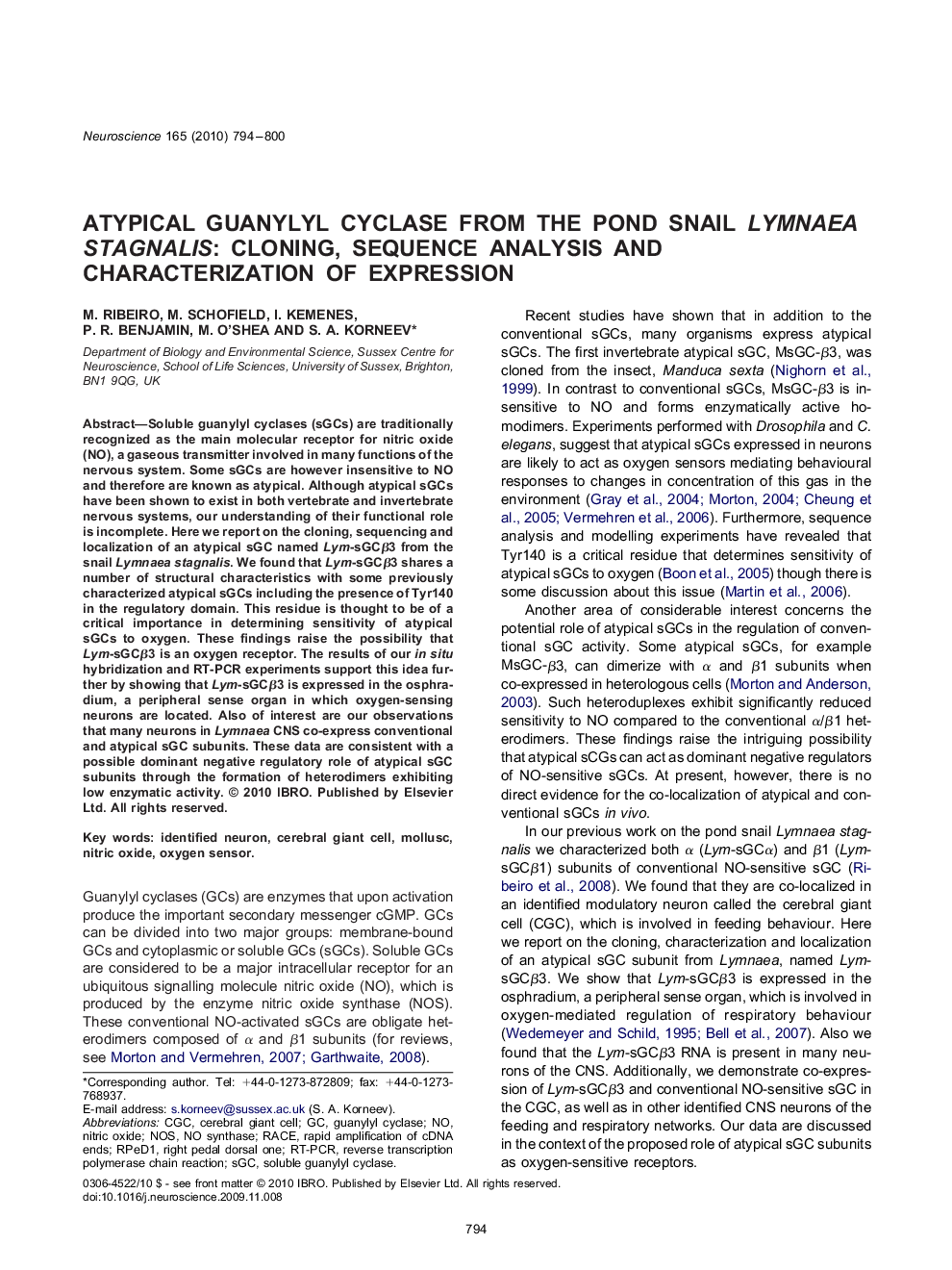| کد مقاله | کد نشریه | سال انتشار | مقاله انگلیسی | نسخه تمام متن |
|---|---|---|---|---|
| 4339548 | 1295760 | 2010 | 7 صفحه PDF | دانلود رایگان |

Soluble guanylyl cyclases (sGCs) are traditionally recognized as the main molecular receptor for nitric oxide (NO), a gaseous transmitter involved in many functions of the nervous system. Some sGCs are however insensitive to NO and therefore are known as atypical. Although atypical sGCs have been shown to exist in both vertebrate and invertebrate nervous systems, our understanding of their functional role is incomplete. Here we report on the cloning, sequencing and localization of an atypical sGC named Lym-sGCβ3 from the snail Lymnaea stagnalis. We found that Lym-sGCβ3 shares a number of structural characteristics with some previously characterized atypical sGCs including the presence of Tyr140 in the regulatory domain. This residue is thought to be of a critical importance in determining sensitivity of atypical sGCs to oxygen. These findings raise the possibility that Lym-sGCβ3 is an oxygen receptor. The results of our in situ hybridization and RT-PCR experiments support this idea further by showing that Lym-sGCβ3 is expressed in the osphradium, a peripheral sense organ in which oxygen-sensing neurons are located. Also of interest are our observations that many neurons in Lymnaea CNS co-express conventional and atypical sGC subunits. These data are consistent with a possible dominant negative regulatory role of atypical sGC subunits through the formation of heterodimers exhibiting low enzymatic activity.
Journal: Neuroscience - Volume 165, Issue 3, 3 February 2010, Pages 794–800